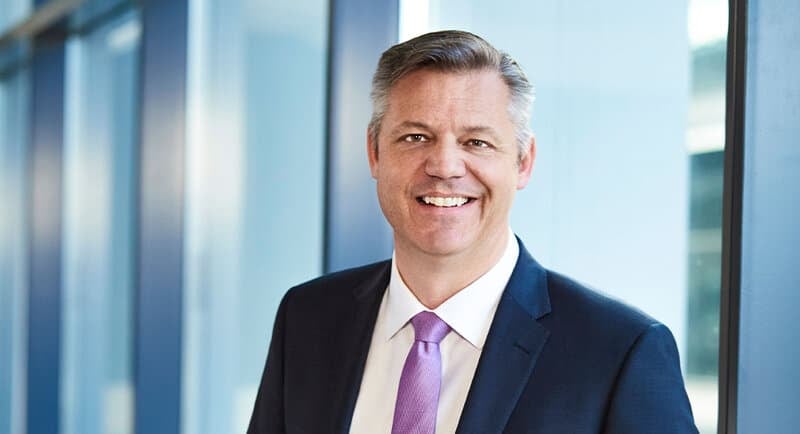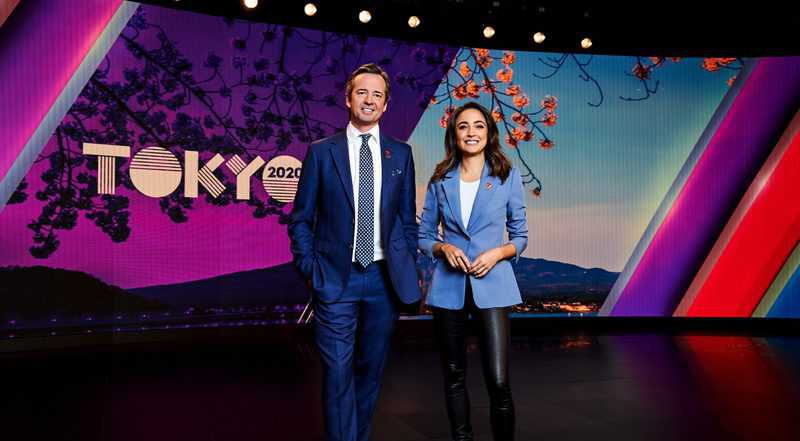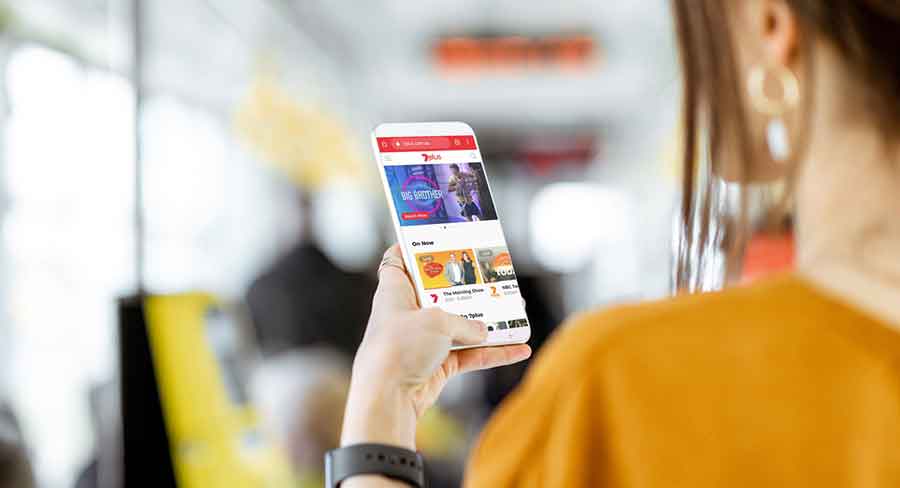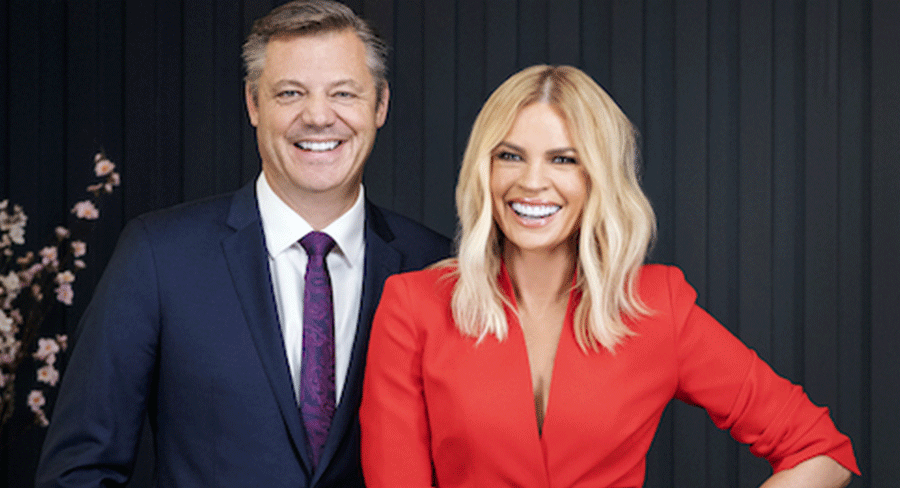There was a time when the future of the Seven Network was looking pretty bleak.
We weren’t expecting it to disappear from the market by any means, but it was hampered by a massive debt pile, a tired content slate, a former CEO shrouded in scandal, and plagued by gossip and declining ratings for one of its tentpole sports – cricket.
Indeed at the end of calendar year 2019, its financials revealed it owed $683 million to the bank.
When I spoke to then-new CEO and managing director of Seven West Media, James Warburton, in February 2020, we met up in person to have the chat. It’s likely that both of us had no idea that a boardroom meeting – replete with handshakes and lacking any sanitiser or masks – would be off the table very shortly.

James Warburton
At the time, I noted Seven was facing a tough year, and needed to turn around its programming, financial position, and the perception that it is in serious trouble.
Warburton certainly agreed on the programming front. Just a few months prior, he’d told me he’d inherited “ageing warhorses” in the content slate which “skewed too old”.
So while he didn’t want to isolate Seven’s core (older) audience, he did want to “[reconnect] with creative ideas that the public has come to expect from Seven”.
“You don’t flick a switch. You don’t do it in five minutes flat. We have to invest, and we have to build our schedule. Sunday to Tuesday 7:30pm is our problem, so we have to revitalise the formats that we believe that we should take forward, and we need to get back to being the Seven that we used to be around creating, executing, and launching content that really connects with heartland Australia,” he told me this time three years ago.
Despite being well aware of – and prepared for – his content issues, at the start of 2020, Warburton was perhaps less prepared for the business implications and outcomes of Covid-19.
In February 2020, Warburton insisted he did not have – and nor did he need – a Plan B should the 2020 Tokyo Olympics be delayed.
Ouch.

Seven hosts Hamish McLachlan and Abbey Gelmi during Tokyo 2020
Fast forward to the end of the 2022 financial year though, and we’ve finally had the Olympics, and Seven has said its net debt is down to $256.5 million.
Over the past two and a half years, Warburton and his content team have repeatedly explained that they’re ‘derisking’ their content slate by commissioning mostly proven formats. Even when they take ‘risks’ with new programs – think Pooch Perfect or Holey Moley – the network has scaled back how many episodes are made per season. So if it flops or doesn’t resonate as strongly as hoped, it’s a six-episode run, rather than 26.
With the Olympics done and dusted, Australian Idol finally returning next year and other staples such as Australia’s Got Talent just around the corner, the Prime acquisition secured, Pacific Magazines sold, debt levels coming down, and a reliance on nostalgic, proven formats, the question now becomes: What next for Seven?
The answer likely lies in its 139-page annual report, which came out yesterday.
Is Seven going to launch a paid streaming offering?
One place where it’s generally agreed Seven is lagging is its lack of a subscription (or paid) streaming option.
Network 10 has done away with 10 All Access, but its parent company Paramount has since brought its product, Paramount+ to our shores.
The Nine Network was previously in a joint venture with Fairfax Media on Stan, but since it gobbled up Fairfax, it now has complete ownership and control of the subscription video product.
Seven, by comparison, only has its advertising-supported service, 7Plus.

The annual report was coy on Seven’s concrete plans, but it did confirm the network is in “ongoing discussions” with content partners about streaming opportunities.
“We continue to explore the establishment of a meaningful streaming partnership,” Warburton said in his letter to shareholders. “This is not about any opportunity, rather the right opportunity, and we will be patient to ensure we get the right result in an extremely crowded market.”
What mergers or acquisitions are on the table?
The word ‘acquisition’ appears 78 times in Seven’s annual report.
Most of these relate to Seven finally acquiring its former regional affiliate Prime, the opportunities the combined entity has presented for advertisers (and Seven’s sales team), and the growth the newly merged company has offered Seven’s programming reach.
In 2019, when Warburton was just days into the job and reporting a $444.4 million loss to the market, he said basically any merger or acquisition was being considered – nothing was off the table.
Despite Seven’s debt levels at the time, he said the company would be a “hunter” of both traditional media and non-traditional adjacencies – provided they are positive for the company’s shareholders.
This time around, however, it appears the M&A opportunities which are ‘on the table’ are outside the media market.
The annual report revealed Seven is looking at M&A opportunities with non-media companies, with the aim of leveraging scale to drive total audience monetisation. It will, it said, “pursue value accretive M&A”.
So where does Seven WANT to be in five years’ time?
Seven’s three-year strategy kicked off in August 2019 – meaning that phase and its objectives are over.
In the next three to five years, Seven revealed it wants to become a diversified media company. It wants to be “audience led and digital first” and “powered by data and technology”. Its other priorities include “total audience monetisation with material non-advertising revenue”, “low gearing with capacity for growth and capital management” and a “re-weighting of portfolio to increase allocation to growth”.
Within these five key objectives, there are some large-scale content and audience goals.
To put it lightly, Seven wants to win.
One stated objective in the annual report is to “win on every screen in all genres of news, sport, and entertainment across all key demographics”.
It also wants 40% (or more) of the ratings and revenue available to the total TV market by the 2024 financial year.
So, basically, win everything, all the time.
It’s a lofty goal, but given Warburton and the team have overcome Antony Catalano’s attempt to scupper the Prime acquisition, managed to offload Pacific Magazines to a reluctant Bauer Media/Are Media, reduced its debt levels and made it through the Olympics delay seemingly without a Plan B, it’s little wonder the CEO is thinking a little more positively this year.
See More: Why Seven West Media had its best financial result in 11 years
–
Top Image: James Warburton and Sonia Kruger
